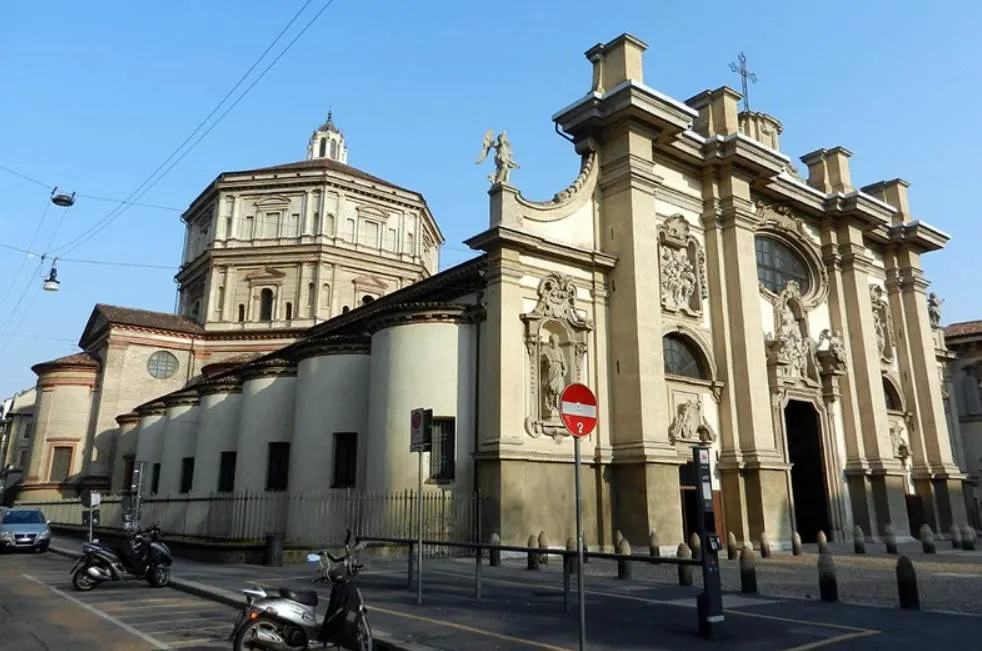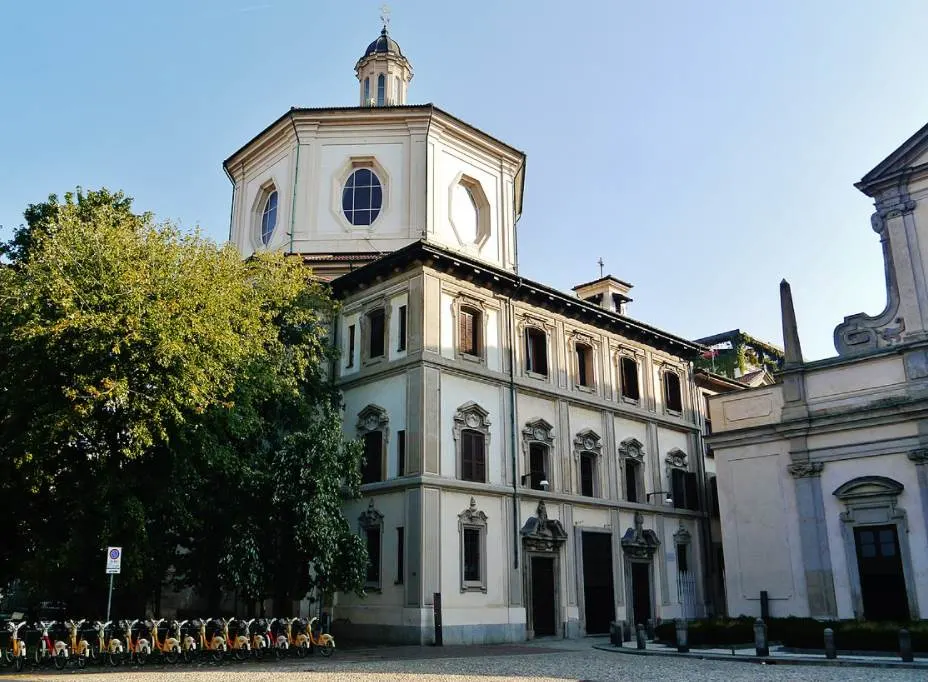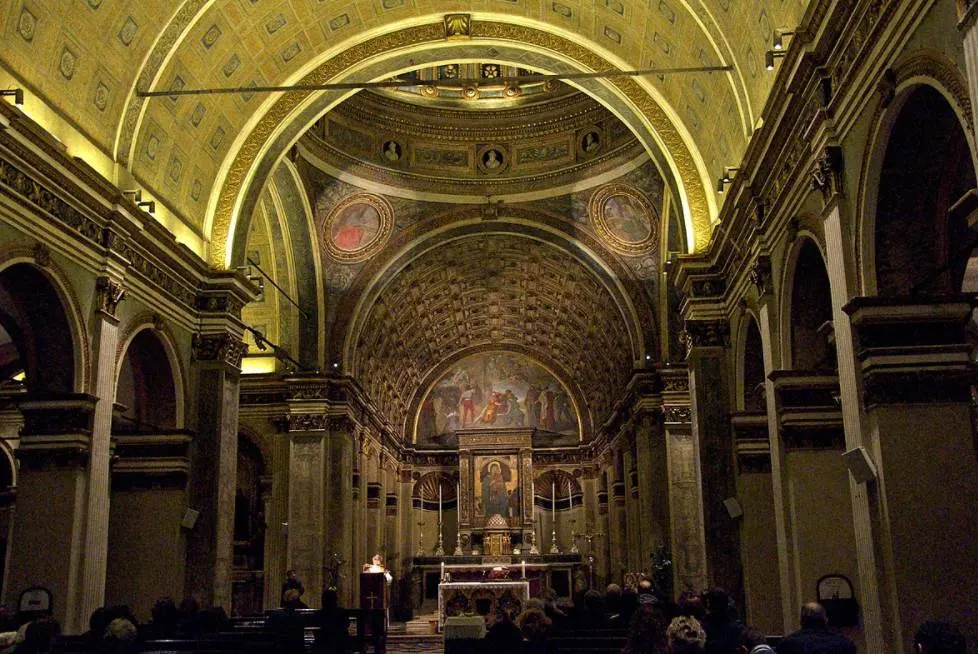Even though the city of Milan in northern Italy is world-famous for being the home of one of the most spectacular churches in the world, there are a lot more churches in the city worth checking out.
The capital of the Lombardy region has been one of the most important cities in Europe since ancient times, a notion emphasized by the fact that Emperor Diocletian moved the capital of the Roman Empire from Rome to Mediolanum in the year 286 A.D.
The Edict of Milan, an agreement that read to the acceptance of all religions was issued here as well in 313 A.D., an event that lead to the construction of churches all across Europe, including Milan.
Let’s take a closer look at some of the most famous churches in Milan, incredible landmark buildings that have more than one interesting story to tell.
1. Milan Cathedral
Milan Cathedral is locally known as the “Duomo di Milano” and is the building around which the city was built. Its located on the square with the same name and is officially known as the “Metropolitan Cathedral-Basilica of the Nativity of Saint Mary.”
The construction of the current magnificent Gothic Cathedral started in the 14th century and wasn’t fully completed until the year 1965. When we excluded the enormous St. Peter’s Basilica, which is officially located in Vatican City, it’s the largest church in Italy.

2. Santa Maria delle Grazie
Even though Santa Maria delle Grazie is one of the most famous churches in Italy, the fame of the structure itself is overshadowed by a fresco that decorates a wall in the refectory of the church. This is the Last Supper Painting by Leonardo da Vinci, arguably one of the best-known paintings in the world.
The church itself was completed in the 15th century during the reign of Duke Ludovico Sforza, the patron of da Vinci. It’s also possible that renowned architect Donato Bramante had a hand in the design of the apse of the church, even though this isn’t 100% clear.

3. Basilica of Sant’Amborgio
The Basilica of Sant’Amborgio is another church in the historical heart of Milan that has an extended history. The original church in this location was built between 379 and 386 and was built by Saint Ambrose, the Bishop of Milan in the 4th century.

The current version of the church was completed in the year 1099 in the Romanesque style, making it an incredibly old building that still stands today. The south and north towers of the church are pretty old as well, dating back to the 9th and 12th centuries respectively.

4. San Carlo al Corso
San Carlo al Corso is a church that was completed in the 19th century between 1844 ad 1847, and this reflects in the Neoclassical architectural design of the building which resembles that of the Pantheon in Rome. It was commissioned by the Servite Order in the city.
The church is located just northeast of the Duomo of Milan and replaced an earlier building that served as the Convent of the Servite Order. This structure was completed in 1290 but ended up being replaced by the current church which is still managed by the Servite Order today.

5. Basilica of San Lorenzo Maggiore
The Basilica of San Lorenzo Maggiore is located just southwest of the historical heart of the city and is another church that has roots dating back to Roman times, having been consecrated in the year 402. It was rebuilt multiple times throughout its history and was only completed in its current state in the 18th century.
The church is located in the vicinity of the Ticino Gate, one of the medieval gates of Milan. It’s also partially encircled by a popular park in Milan that was named after the two churches it connects called “Basilicas Park.”

6. Basilica of Sant’Eustorgio
The Basilica of Sant’Eustorgio is the other church located near the Basilicas park and can be found in the southern part of this green public space in Central Milan. This is one of the most famous churches in Milan for a very specific reason.
It used to be a very important stop for pilgrims who traveled to Rome as it was assumed to contain the grave of the “Three Magi” or “Three Kings.” Yes, these are the three guys that supposedly visited baby Jesus Christ shortly after he was born. The church also has roots in the 4th century and was completed as it looks today in the 16th century.

7. Church of Saint Maurice
The Church of Saint Maurice is officially known as the San Maurizio al Monastero Maggiore. This is a reference to the fact that it’s attached to what was once the most important female convent of the Benedictines called the “Monastero Maggiore.”
This former monastery has now been transformed into the Civic Archaeological Museum which has many ancient artifacts on display. The church itself was completed between 1503 and 1518, a period now referred to as the High-Renaissance.

8. San Fedele
San Fedele is a church managed by the Jesuit Order in the city of Milan and was dedicated to St. Fidelis of Como, a presumed Roman army officer who became a Christian and who was martyred during the Persecution of Christians in the early 4th century.
The church is located right in the heart of the city, north of Milan Cathedral, and right next to the Galleria Vittorio Emanuele II. The church is renowned for the multiple religious artworks it houses and the adjoining Museo San Fedele which opened its doors in December 2014.

9. Santa Maria della Passione
Santa Maria della Passione can easily be described as the epitome of Renaissance architecture in the city of Milan. It was originally built in the late 15th century and was expanded during the 16th century for it to take on the shape of a cross.
The Baroque façade of the building wasn’t completed until the late 17th century and the church is also renowned for housing multiple important works of art, including both paintings on canvases and frescoes dating back to the early 16th century.

10. San Bernardino alle Ossa
San Bernardino alle Ossa is a church that was built near a former cemetery in Milan. Because the cemetery didn’t suffice anymore in the 13th century, a chamber was built right next to it to store the remains of the dead people.
This means that the side chapel of the church was turned into an ossuary, the main reason why the church was named “San Bernardino alle Ossa.” The original church on the site was destroyed in the early 18th century and rebuilt to its current design in the year 1776. The ossuary remains the most popular attraction of the church today.

11. San Nazaro Maggiore
San Nazaro Maggiore is also sometimes referred to as San Nazaro in Brolo and is a church that was built by Saint Ambrose, the 4th-century Bishop of Milan, himself. This fact is verified by an inscription he made on the walls, some of which are still visible today.
The design of the church was also remarkable as it took on the shape of a Greek cross with naves extending from each side. It was built starting in the year 383 on the road leading from Milan to Rome. An additional structure that is known as the “Trivulzio Mausoleum” was built against the ancient structure in the 16th century.

12. Santa Maria Presso San Satiro
Santa Maria Presso San Satiro is a church that was built between 1476 and 1482 and houses an important shrine in the city known as the “Shrine to Satyrus,” the brother of Saint Ambrose who suddenly died in Milan in the year 378.
The most fascinating feature of the church is located right at the end of the nave. The wall at the end of the church features an optical illusion known as “trompe-l’œil,” one of the first times an architect used this technique in architecture. It’s attributed to Donato Bramante and allowed him to create a much larger apse than the 90 centimeters (3 feet) he had to work with.

